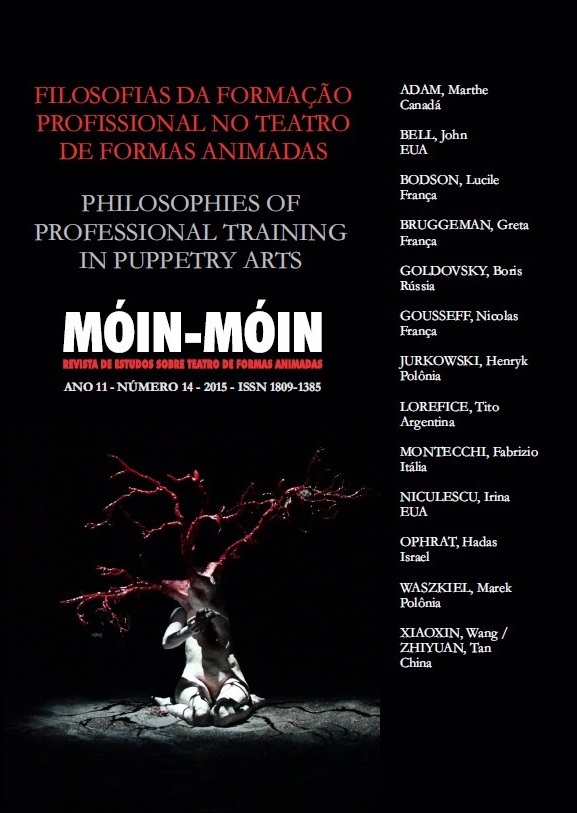O estímulo à lei do movimento nos bonecos através do relaxamento natural Uma entrevista com o mestre bonequeiro e educador Tan Zhiyuan
DOI:
https://doi.org/10.5965/2595034702142015257Abstract
Entrevista concedida por Tan Zhiyuan a Wang Xiaoxin. (professor do Programa de Teatro de Bonecos da Academia de Teatro de Xangai, mestre pela Universidade de Pequim, pesquisador especial vinculado à Escola de Teatro da Universidade de Yale). Data e duração da entrevista: 12 de fevereiro de 2015, das 16h às 22h. Local da entrevista: casa de Tan Zhiyuan.
O boneco de varas é uma forma importante de teatro de bonecos na
China. Sua estrutura e suas técnicas de atuação são muito diferentes das
marionetes e dos bonecos de luva. O boneco de varas pode ser manipulado por uma vara principal (ligada à cabeça do boneco) e duas outras varas ligadas às mãos do boneco. Assim, é conhecido como “três varas”. Ele é designado por “varas” por sua semelhança com a bengala. Na China, a companhia mais representativa de bonecos de varas é a Companhia Nacional de Teatro de Bonecos da China, com a qual ele trabalhou.
Palavras Chave: animação, relaxamento, boneco de vara, habilidade do pulso.
Downloads
Downloads
Pubblicato
Come citare
Fascicolo
Sezione
Licenza
Ao submeter um artigo à Móin-Móin Revista de Estudos Sobre Teatro de Formas Animadas e tê-lo aprovado os autores concordam em ceder, sem remuneração, os seguintes direitos à Revista: os direitos de primeira publicação e a permissão para que a Revista redistribua esse artigo e seus metadados aos serviços de indexação e referência que seus editores julguem apropriados.
Os artigos cujos autores são identificados representam a expressão do ponto de vista de seus autores e não a posição oficial da revista Móin-Móin.
Plágio, em todas as suas formas, constitui um comportamento antiético de publicação e é inaceitável. A Revista Móin-Móin reserva-se o direito de usar software ou outros métodos de detecção de plágio para analisar os trabalhos submetidos.
![]()
Este obra está licenciado com uma Licença Atribuição-NãoComercial 4.0 Internacional






